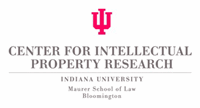Document Type
Article
Publication Date
2025
Publication Citation
IP Theory: Vol. 14: Iss. 2, Article 2
Abstract
At the dawn of this decade, generative Artificial Intelligence (AI) models were at the apogee of modern science and technology. Their emergence introduced the world to a new paradigm of creativity and innovation, where machines can synthesize art, literature, and design with unprecedented sophistication, blurring the boundaries between human ingenuity and algorithmic computation. These models have the capacity to regenerate Oscar Wilde with the depiction of Ansel Adams, rewrite Harry Potter with William Shakespear’s proverbial tongue, and redesign St. Peter’s Basilica with Gothic arches, Seljuk carved stones, and an Antoni Gaudi roof architecture, relocated in the heart of New York City with the facile of a prompt. Despite this novelty, the copyright industry was perturbed by what they considered a twofold threat to their livelihood. On the one hand, authors feared their works were being exploited, likely reproduced, without adequate remuneration. On the other hand, they feared these models were ominously generating new works, possibly derivative works, that directly compete with the very works that were used in the model’s formation. The matter is currently being adjudicated in courts across the globe.
This article examines whether fair use can protect AI companies from copyright liability for both the training process, which allegedly relies on the process of feeding AI datasets (foundation models) predominantly with copyrighted material scraped off the internet for purposes of machine learning; and the outputs that directly compete with the sampled material exploited during the training process. Although several scholars have begun to articulate their own thesis vis-à-vis its legality domestically, this article compares and anticipates how the judiciary in the United States will address these issues as opposed to courts in fair dealing jurisdictions across the globe. The article will expose how the dichotomy between the fair use doctrine and the fair dealing clause imperatively affects the progression of these types of technologies, concluding that fair use is more conductive to development than its foreign counterparts.
Recommended Citation
Awad, Taysir
(2025)
"Generative AI's Copyright Enigma: A Comparative Study of Fair Use and Fair Dealing,"
IP Theory: Vol. 14:
Iss.
2, Article 2.
Available at:
https://www.repository.law.indiana.edu/ipt/vol14/iss2/2
Included in
Comparative and Foreign Law Commons, Intellectual Property Law Commons, Science and Technology Law Commons
